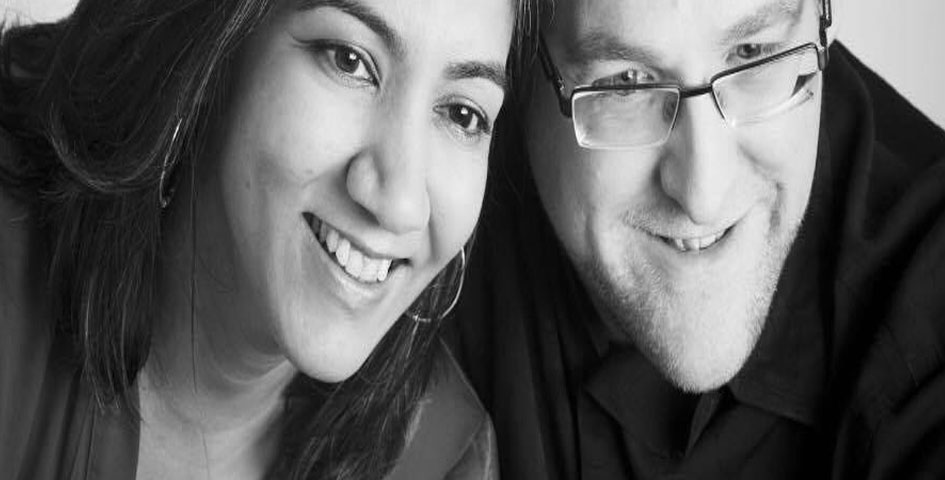
A journalist and PR professional, George was associated with the BBC back in 2005 when work commitments brought him to Karachi. The production facility the BBC was using was a property of a local media house. His wife Kiran was working there as a journalist.
George is back in Karachi and works for an international firm while Kiran is a homemaker. Together they are raising their son Faiz.
In a culture where many of us are still fighting battles to be with a partner of their choice, breaking barriers to marry someone from a very different ethnic group or sect, region or socioeconomic class, adds to the struggle. Interracial and interfaith marriages remain unthinkable in popular imagination.
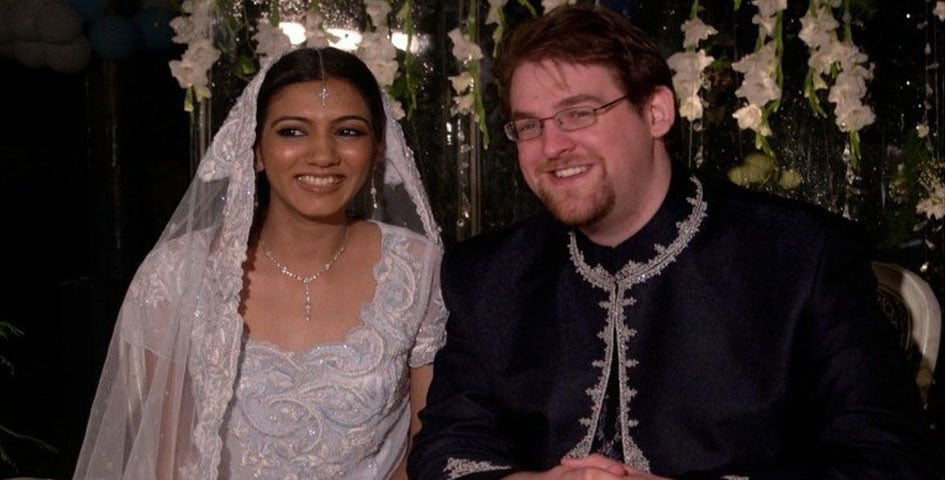 George Fulton and Kiran. PHOTO: ONLINE
George Fulton and Kiran. PHOTO: ONLINEFor Kiran and George, getting married, coming into the limelight, hosting a TV show together and becoming Pakistan’s favourite couple is a tad bit surprising.
According to George, he and Kiran were prepared for the task beforehand.
“We did not encounter disapproval based on racial or cultural differences but of course we were smart about it. We told her sisters first. I spoke to her elder brother first, who is nine years older to her; we had all the necessary instructions,” he says.
Undoubtedly, interracial marriages are quite different from romances in Bollywood flicks. As two independent and mature adults, George and Kiran worked out the hard questions among themselves first.
“It wasn’t that we were just in love. We dealt with all the practical questions that married life entails,” he continues.
George moved back to the UK at some point but they remained in a long-distance relationship for 14 months. It was during that time that they worked out all the details.
“At that time, former president Musharraf had just liberalised the media and it was booming. I had moved to Geo from the BBC and Kiran was with Aaj TV. It was an interesting time to be in the Pakistani media scene,” recalls George.
This Hindu-Muslim couple did away with traditional ceremonies to celebrate their love
At this point, they have lived both in the UK and in Pakistan and thoroughly enjoyed the experiences. They have learned from each other’s cultures and according to them, it has enriched their personalities and worldview.
“It forces you to challenge yourself so we have grown as people. The downside of marrying someone of your own background is that it’s very easy to have your prejudices and thoughts reinforced whereas when you are with someone from a different culture and background it forces you to question all your assumptions that you’ve grown up with,” says George.
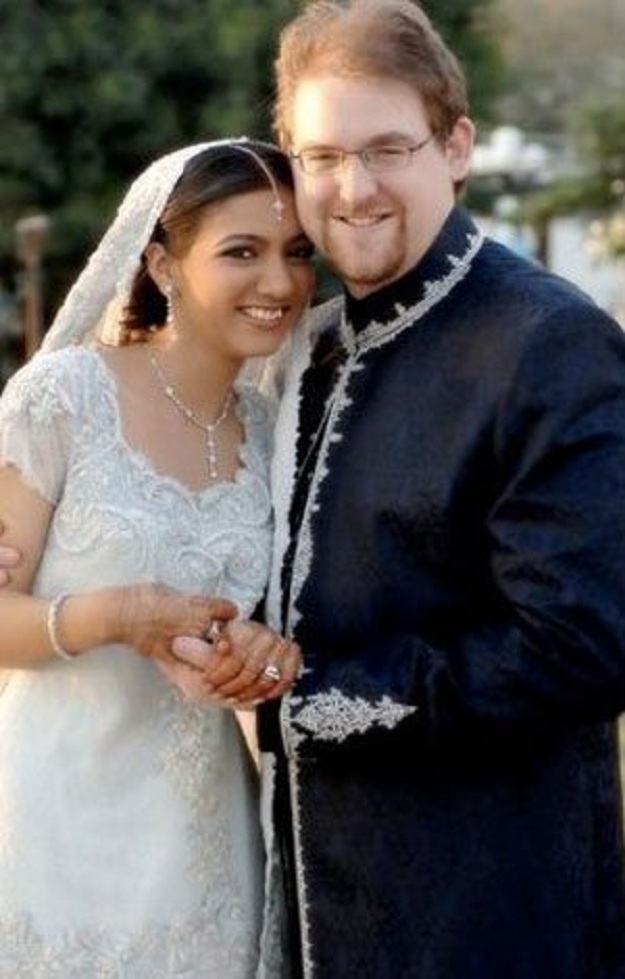
George’s time, spent in Pakistan, definitely helped their case. However, he feels that social attitudes can sometimes be unfair especially when they are springing from a lack of exposure.
“There is a negative and untrue perception about goras in Pakistan that we don’t take relationships as seriously and we are not as committed. I have seen both very serious and committed relationships and non-committed ones too in my life. So I feel it is slightly unfair to pigeonhole Western people like that,” he explains.
George has been in a constant process of learning. Sometimes, differences in understanding spring from the collective nature of Pakistani society in contrast to the more individualistic nature of the West where he was raised.
“This one time, when one of Kiran’s great aunts passed away, I wasn’t particularly distraught. I didn’t realise that when these things happen in Pakistan, the entire family comes together. I hadn’t met her that much so I didn’t really get the need to be around such a person’s house to pay condolences,” he says.
Muslim and Christian leaders pledge interfaith harmony
Likewise, he feels that during their time in the UK, Kiran realised that there was more of a ‘do it yourself’ attitude, and the absence of a network of an extended family around you, so self-reliance became key.
Kiran, on the other hand, has accumulated her share of experiences with his family, which she cherishes. Mostly, it is the little things.
“I love that in the UK when you go for a dinner party you’ll get just one meal. Whatever it is, it is made by the host. It is more personalised and no one expects more. The focus remains on enjoying each other’s company and not so much on having 10 dishes lined up on the table and just the preparations. I also love how at a dinner table, a 7-year-old can have conversation with a 70-year-old. There’s just less formality,” says Kiran.
The concept of interracial and interfaith marriages, even today, is far from becoming a norm. The institution of marriage for most people brings to their minds a similarity in language, culture, background and practices.
More so, those involving a Muslim woman are even rare. In the Muslim diaspora across the West, this has been a contentious issue owed to the fact that Islamic law prohibits Muslim women from marrying outside their faith. Therefore, conversion is the only option for an individual who wants to marry a Muslim woman.
Some accept this condition. Others do not.
In 2012, debates around interracial marriages sparked up in Denmark, particularly for women of racial minorities, many of whom were Muslim. A social predicament was at hand; women of racial minorities were more educated than men of racial minorities and so, they were facing difficulties in finding a suitable spouse.
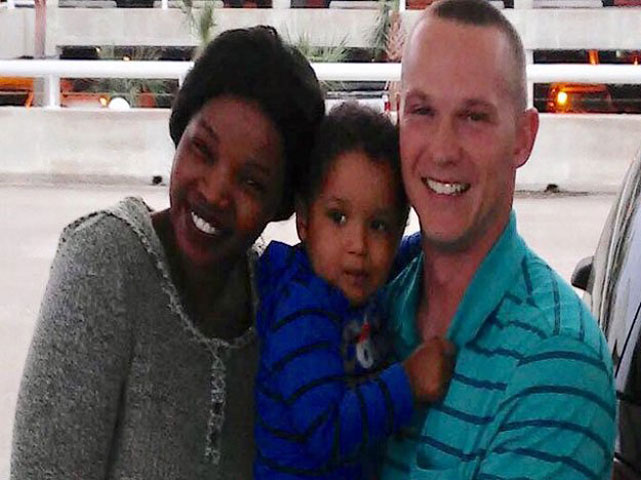 Guthrie Stewart Kees with his wife Lannete Wangechi Kees and two-year-old boy. PHOTO: SHANEL KHALIQ
Guthrie Stewart Kees with his wife Lannete Wangechi Kees and two-year-old boy. PHOTO: SHANEL KHALIQRikke Andreassen's study titled ‘Muslim women and interracial intimacies’ analysed online comments made on articles on integration from the time. Many complained that by refusing to marry a non-Muslim man, Muslim women were creating barriers to ‘integration’ – a goal of most societies today but one for which a single definition does not exist.
Many ethnic Danes complained of ‘reverse racism’, saying if they expressed a willingness of marrying only White women, it would cause a massive uproar. Meanwhile, countries such as the US have had their own share of experiences coping with the matter.
Historically, Virginia and Maryland states had the harshest laws on interracial marriages. However, in 1967, some 16 southern US states repealed laws banning interracial marriages following a verdict in the famed Loving versus Virginia case. The famed interracial couple, Mildred Jeter (a Black woman) and Richard Loving (a White man), who protested against the law and fought their case, has been an inspiration for a number of Hollywood movies.
Guthrie Stewart Kees, 31, a resident of Florida met his wife in Kenya, five years ago when he was vacationing there with his brother. One night, when they were hanging out at a bar, he fell for a girl dressed in white immediately. He gathered all his courage to go up to her and talk and from then onwards there was no looking back. Kees proposed to her after a-year-and-a-half.
The love story of a Muslim Iraqi refugee and a Christian cop
Kees’s work has taken him to Niger currently; however, his wife, Lannete Wangechi Kees and their two-year-old boy are living in the US.
“If you have the same point of view, you will probably not get into some of the bad arguments that some relationships have, which I think is boring. If you don’t have anything to argue about in the beginning, how will your next 50 years be? You need those situations to build the relationship and to learn about your partner. We argue and go quiet for a short time and then say sorry to each other. Relationships and marriages have to have a tinge of give and take,” Kees enlightens.
Pop culture is gradually playing its role in creating social acceptance and racial equality. With the likes of Aziz Ansari, Kumail Nanjiani, Mindy Kaling and Hasan Minhaj, there is a rise in exposure to the cultural nuances of the various diasporas in the west.
Kees feels that the choice to be in an interracial union mostly springs from an individual’s family structure. If you are raised in a way that you are encouraged to be yourself and follow a path you pick, the decision-making becomes smooth.
“When I realised that I am attracted towards a black woman, I knew there was no need to ask my parents if it was ok because I knew there wasn’t any issue. So when I chose to marry my wife, I did so without fear of being frowned upon by the people in my life I care about,” he says.
For others, the path was easy too, but differently.
Melanie Schweiger, a 29-year-old marketing and communications professional based in Germany met her husband in the same city where they now live together. Siddhant Goel, born and raised in India, was working at a start-up in June 2012. It was unlikely for their paths to cross but fate had an interesting plan.
She worked on Tuesdays and Thursdays in the company for which Siddhant was working from home. One day, Siddhant finally met Melanie.
“I came back from my lunch break and saw him sitting in the office and, as cheesy as it may sound, I fell in love with him at first sight,” she remembers.
For the next few weeks, she tried to run into him again. Only a month later they became a couple.
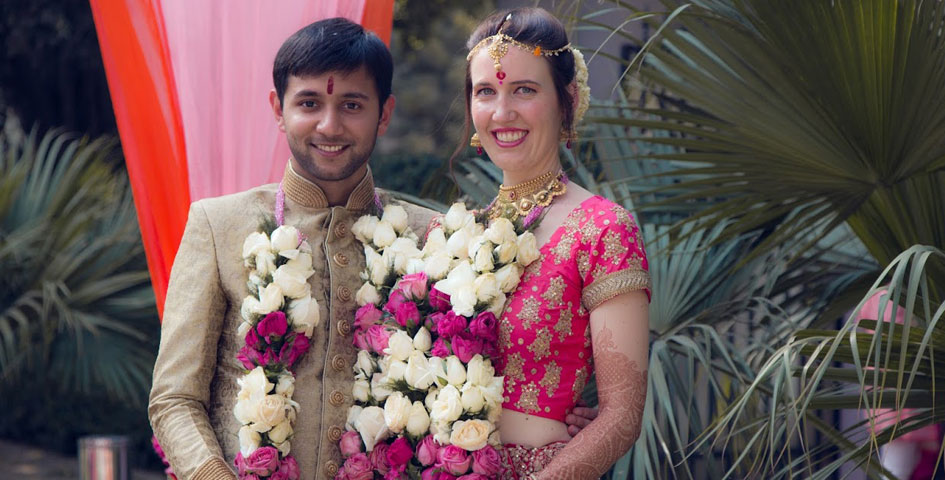 Siddhant Goel with his wife Melanie Schweiger. PHOTO: SHANEL KHALIQ
Siddhant Goel with his wife Melanie Schweiger. PHOTO: SHANEL KHALIQ“The wonderful thing about him was that he was brave enough to start a relationship even though I was about to leave for China for a year. We both had so much faith in each other that we wanted to try this relationship. We finally got married first in Germany in November 2015 and then in India in March 2016,” she says.
They are currently settled in Germany but they have plans to live in India at some point later.
“Siddhant and I tried to educate our families from the beginning. In the end, the most important thing for parents remains the happiness of their kids and that their roots continue to exist. Since we give room to both the cultures to exist, neither one of our parents had issues with our relationship,” she explains.
The couple’s parents are happy that their kids will grow up with exposure to two different cultures. However, they are cognizant of the fact that they might get the ‘Where are you from?’ question often. Nonetheless, since both Siddhant and Melanie are not religious, they feel it will not be a confusing experience for them.
Kees, on the other hand, feels that he and his wife differ on religious ideas.
“I have faith that there is an afterlife and a God but I don’t hold my breath waiting for blessings. I deal with the cards that are dealt when they are dealt. My wife is somewhat similar but she does go to a Christian church with my son and listens to the Gospel. But she is not a devout Christian who spends most of her time in the Church,” he explains. Once Kees’s children become adults, it will be their decision whether they wish to stick to a faith or not.
This Hindu-Muslim couple did away with traditional ceremonies to celebrate their love
What parents communicate in the beginning, Siddhant says, is not particularly a disapproval but mostly apprehension about whether their kids can cope up with the differences. Girls, however, find it tougher sometimes.
“Intercultural relationships (between cultures) don't really have widespread approval as of now. Depending on the position of a specific gender in a society, acceptance can be difficult to obtain,” he points out.
Tanvi Sirari, 31 and a doctoral student from India at the University of British Columbia in Canada, had an uphill battle. Her husband, Espen Stranger-Johannessen is from Norway. They both study in the same university. They met in 2009 in India during an internship. Tanvi’s parents always wanted her to marry an Indian guy.
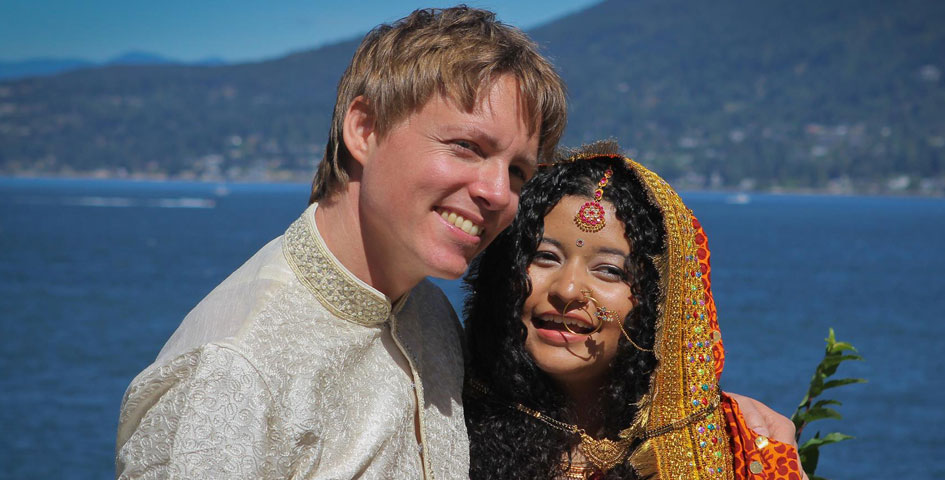 Tanvi Sirari and her husband Espen Stranger-Johannessen. PHOTO: SHANEL KHALIQ
Tanvi Sirari and her husband Espen Stranger-Johannessen. PHOTO: SHANEL KHALIQ“Although Espen is an atheist, my parents saw him as a Christian and were not very happy about it. But, they would have been more distraught if he was Muslim because of the kind of stereotypes attached to the community in the Indian context,” she says.
In most other aspects, Espen was exactly what her parents wished for her; well educated, vegetarian, non-smoker who never drank.
The couple prefers to live in Canada, not only because of their education but also because it has a diverse society with generations of immigrants rendering it multiracial and multilingual.
“I also liked his Canadian political tone, which is optimistic and accepting of differences,” Tanvi says.
Pakistani, white, Sindhi, Canadian, black: What do you identify as?
“There is more acceptance for interracial interaction but that does not reflect a fall in institutional racism or the overall racial hierarchy which is more structural than interpersonal. It could be an indicator of a decrease in support for overt forms of racism, yet you can be married to someone from another race and still be a racist,” she says.
Tanvi is aiming to ensure that while educating her children about their heritage, they should know the existing forms of racism and learn to call it out. They do not have children yet, but they agree on most of the matters about their upbringing.
“We still need to figure out one thing. Espen is a pescatarian and I eat meat in all forms. So we need to see what to feed our child,” she says.
Staying strong and respecting each other’s beliefs is the ultimate requirement of successful marriages for Tanvi as she looks forward to celebrating Christmas with Espen’s family.
Shanel Khaliq is a freelance journalist and a teacher who is interested in issues related to gender, race and social justice. She tweets @Shanel9999



1725612926-0/Tribune-Pic-(8)1725612926-0-165x106.webp)













COMMENTS
Comments are moderated and generally will be posted if they are on-topic and not abusive.
For more information, please see our Comments FAQ